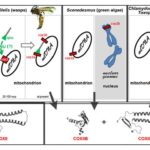Tag Archives:RNA
Tracking mRNA in living cells using Pepper RNA aptamer
Can RNA therapeutics help spinal cord injury treatments?
Frac-seq uncovers widespread RNA dysregulation in severe asthma
RNA-mediated epigenetic inheritance
Achieving synergistic biopolymer functions using systems chemistry
Mitochondrial gene discontinuity that translates into fragmented functional proteins
Understanding the many languages of RNA
Revisiting the RNA World with its inventor
The RNA World Hypothesis is a model for the early evolution of life on earth proposed in 1986 by the molecular biologist Walter Gilbert, in which he posited that the earliest forms of life were likely composed
Early plant development under stress relies on RNA splicing
What is the connection between cell division and neurodegenerative disease?
Unraveling multiple checkpoints for accurate selection of initiator tRNA on ribosomes for translation initiation
A novel deep learning-based method for predicting RNA-protein interactions
A new technology for employing artificial trans-acting small interfering RNA
Lipid modified natural RNA
A new hypothesis of autoimmune diseases: stress and the nucleolus
Viable RNase H1 knockout mice: The end of an enigma
Human cells have two RNase H enzymes, HI and H2. RNase H enzymes degrade RNA but only when an RNA strand is hybridized to a DNA strand forming an RNA-DNA heteroduplex. These enzymes are present in almost
From parasitic microfungi towards the origins of Microsporidia
Novel approaches to cancer treatment encoded within non-coding RNA
A hallmark of all living organisms is the presence of genetic material within each cell; this material is invariantly composed of a specific class of biological molecules known as the nucleic acids. While the more familiar variety





















